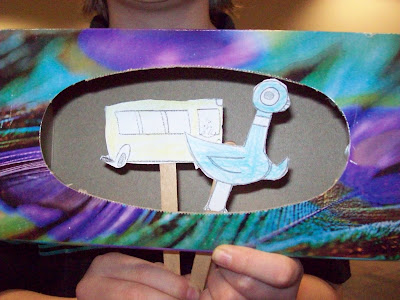This year I wanted to take an active step in making that connection between the school and public library. I invited our local librarians to attend our school's second PreK-2nd Grade Family Reading Afternoon Session. They were going to be our guest readers. The students and parents really loved seeing them at the school.
At each of these events we focus it around skills that parents can work with their children on. Today's focus was fluency and reading with expression. What better character to pick than Pigeon, from Mo Willems, who is well known for his crazy emotional outburst.
The afternoon started out with Tammy, our local librarian, reading "Don't Let the Pigeon Drive the Bus!", "My Friend is Sad", and "Waiting is Not Easy!". She is such a wonderful storyteller that she had all the children from ages 3 to 10 eagerly listening to find out what was going to happen next. It was a perfect introduction to our afternoon.
After this, the parents moved around the media center to the different stations with their children. We had a puppet theater station where the students made puppets of the characters from the book in order to retell the story to their parents using the voice of the characters. They can use this theater box with other stories later.
Another station was where the students could come up with ideas for another story. They could decide what they didn't want Pigeon to drive.
Our third station was a fluency station where the parents would read a line from the story with different emotions and then have their child to read the line with the same expression they did. They then created their own pigeon book. The students had to look at the emotions of the characters to write the book.
Our last station was the Public Library Station where the students could sign up for their very own library card, while learning about the programs that they offer. Donna and Tammy also had some We Read Together books that the parents could explore since this was one of the strategies that we suggested to help with reading fluently.
Our afternoon was a success thanks to the support from our local public librarians.








